#Lamu culture
Text
10 Wonderful Places To Visit In Kenya
#Amboseli National Park#beaches of Kenya#best places in Kenya#climbing Mount Kenya#Diani Beach holidays#exploring Kenya#Hell's Gate adventure#Kenya cultural experiences#Kenya safari trips#Kenya top destinations#Kenya travel guide#Kenya wildlife tours#Lake Nakuru birdwatching#Lamu culture#Maasai Mara safari#Nairobi attractions#Samburu wildlife#trekking in Kenya#Tsavo National Park#visit Kenya
1 note
·
View note
Text
Watch "lost in Lamu" on YouTube
youtube
0 notes
Text
Jagna's crown in The Peasants (2023)
To begin with, I really liked this film in many, many aspects, so this is by no means hate on it.
Buuut if there's one tiny thing that they could've done better... is to double down on the folk stuff. What I mainly mean is Jagna's crown. It's like a nod towards tradition but... Her dress is very city-like imo, white, embroidered with what seems sparkly (meaning expensive) threads. Meanwhile, the crown is small and made of lace, peacock feathers, blueberries??, plants I don't recognise. Don't get me wrong, it's pretty and huge respect to the maker.
In the og book, regarding the crown, we read: "Her hair, braided over her forehead, bore above it a rich pile of gold spangles, and peacock’s eyes, and sprigs of rosemary. Therefrom, down to her nape and shoulders, fell long ribbons of every hue;" (translation by Michael Dziewicki). It was also described as tall but I guess it was lost in translation.
Well, just compare this:


to these:

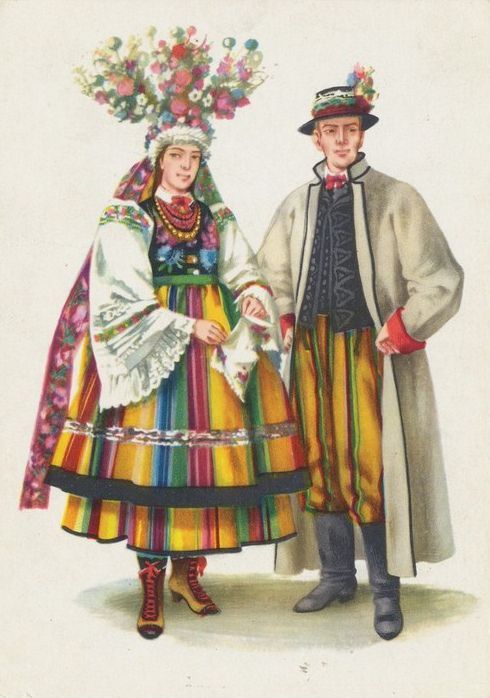
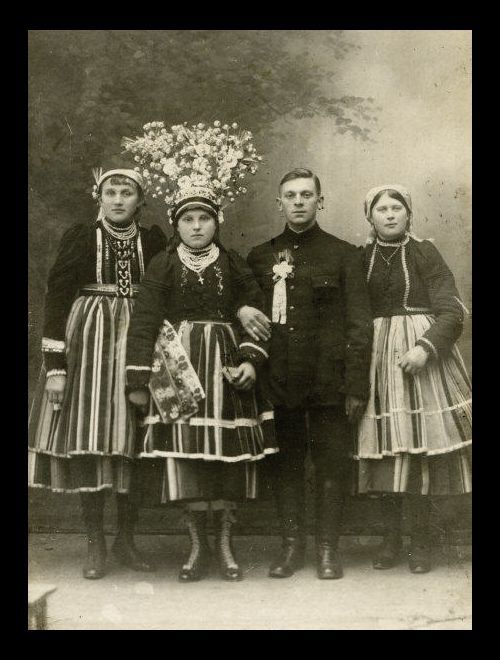
These are from Łowicz which is kinda in the region where Lipce is.
Anyway, this film is not super historically accurate (there's no way they would let Jagna have her hair down, not braided at all) but they did try. Overall, it's a nice introduction to the culture and an invitation to explore more on your own.
More on flower crowns in this brilliant article with more gorgeous examples by lamus dworski.
117 notes
·
View notes
Text
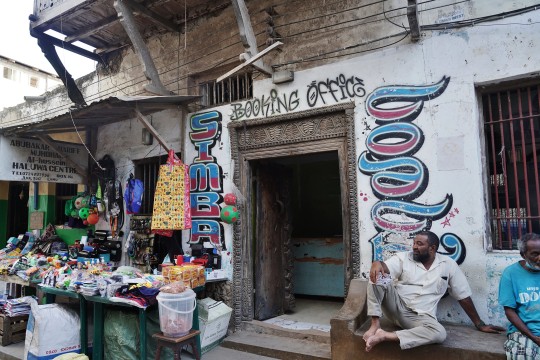
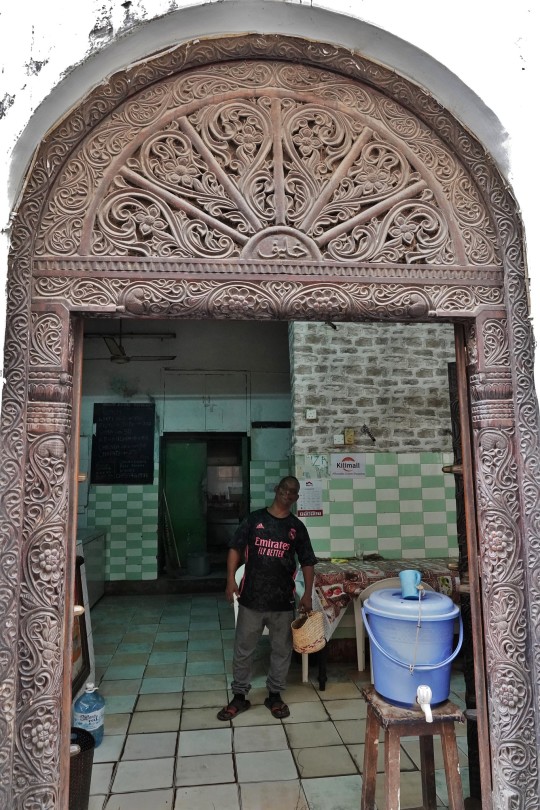
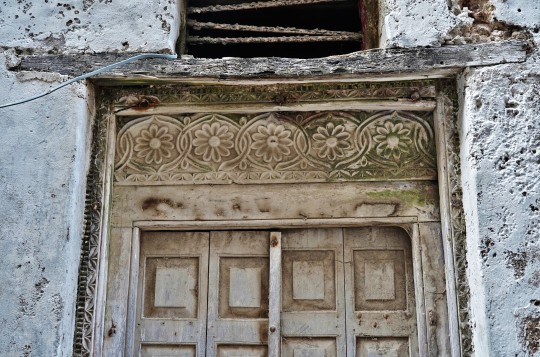

the old town on lamu island in kenya is one of the oldest and best-preserved swahili settlements in east africa, having been founded in the 14th century, and - unlike many other swahili settlements - continuously inhabited since. historically, it served as an economic powerhouse, and today still lives as a cultural one. like swahili culture itself, its buildings mix architectural elements from cultures who've come in contact with the area, including bantu, arab, persian, indian, and european.
one of the most distinctive features of the old town's architecture - and swahili architecture in general - is the carved detailing on doors, which is usually done on wood. since carved doors were once considered a sign of wealth, many buildings in lamu old town have them. the patterns are often geometric and nature-inspired and sometimes contain religious inscriptions.
#swahili coast#details#my posts#was gonna just post about one place but i am in love with these doors#most of the swahili settlements which were abandoned/ruined were because of various colonial threats btw#which went on for a very /very/ long time
26 notes
·
View notes
Note
book (or other media) recommendations for a pole who skipped learning about their countries beliefs? kind of shameful rlly. not interested in the slavic deities but im interested in various spirits and how they were worked with and venerated
Hmm let me see…
„Polska Demonologia Ludowa” by Leonard J. Pełka is probably the best resource I know of for specifically Polish beliefs about various spirits.
You might also enjoy the last couple of chapters of „Religia Słowian” by Andrzej Szyjewski and „Mitologia Słowian” by Aleksander Gieysztor. While those two books do heavily focus on the gods they also contain useful information about various spirits, creation myths, as well as, no less importantly, history of research on Slavic paganism and methods employed in this research. They’re very well known sources and you’re going to see them cited or referred to in many other works.
For the long game I definitely recommend slowly making your way through „Kultura ludowa słowian, Cześć 2: Kultura Duchowa” (Zeszyt 1 i 2) by Kazimerz Moszyński. It’s an absolutely wonderful source, describing the way various Slavic peoples viewed elements of nature, spirits and cultural practices as well as the folk tales surrounding the aforementioned phenomena. The book is 700 pages long.
I can also recommend „Sources of Slavic Pre-Christian Religion”, edited by Juan Antonio Álvarez-Pedrosa. This publication „brings together, for the first time in a Western European language, the edition and translation of all the medieval texts which refer to Slavic pre-Christian religion”. It’s nice to have all your oldest sources in one place.
And then of course take a look at the archives of Studia Mythologica Slavica and Lamus Dworski’s list of Polish resources and pick whatever sparks your interest from the articles listed there.
Lastly, just because I’m pretty sure it doesn’t appear in other places I listed, some bonus vampire content.
Best of luck to you!
135 notes
·
View notes
Note
Cześć.
What good resources to you suggest starting to learn about polish culture? Trying to reconnect with my polish roots. Resources that are free, if possible. A lot of the things I find already expect you to have a big understanding of the cultural context and it's hard to follow/ understand.
If this is a too much trouble for you, or if this is not the right place to ask, please delete the ask.

it is Lesser Poland in english indeed.
now, there are two important questions: first, what exactly would you like to learn, how do you understand culture as such? and two, what have you found so far that proved to demand too much context?
then, it has to be remembered that while I can recommend some places that to me seem like a good start, I am a polish person - I never had to learn about our culture from online sources, and surely not in english.
first, as always, I would recommend the great blog of @lamus-dworski - either the tumblr linked here, or the wordpress blog with incredible assortment of posts and references about the widely understood folk polish culture. if it's folk culture you want to learn more about, let me know, I can have more links given my blog is, you know. largely about that.
for more broadly understood culture, culture.pl seems to have an abundance of interesting articles about polish culture, both past and contemporary; however, I've only been able to read a couple so I can't vouch for the whole of it and the stance they take on various issues. they do have a nice cuisine section, though, and that's always fun.
you can check out Polish Tourism Organisation, too, and simply the great overview of Poland on Britannica, including all the culture and art and language sections, and the Additional Reading section.
for Małopolska itself, you can find some interesting information on their own website for the region.
again, as a pole, it is hard for me to recommend places to start - I can try being more helpful if you give me more details and expectations.
25 notes
·
View notes
Note
knocks on ur door hey dyhave any resources on learning abt polish/slavic history/hertiage? if not thats cool too! your art is amazing and im glad to have found your blog either way
culture wise the only one that comes to mind is lamus dworski (tumblr and wordpress blog). but history wise i have no idea. even if you mean a specific time period in a specific place i dont really have much to share with you... i generally dont have to use english sources so im afraid i cannot be much of help in that regard. goes without saying but im talking about poland here
23 notes
·
View notes
Text
Pondering and Rambling About Isekai A Little Bittttt.....




Rewatching VS Knights of Lamune & 40 Fire. (mouthful of a title, henceforth 40 Fire)
For the unfamiliar, the Lamune series is SD mecha anime series, comparable to Mashin Eiyuu Wataru and Madou King Granzort. in both TV anime the hero is some bozo kid who gets sucked into a video game (in 40 Fire's case, a CD-ROM game that was inserted into a console that suspiciously resembles a playstation) only to be gilded with the title of the great hero Lamuness: in this case, our new protagonist Lamunedo is christened Lamuness the Third. It's pretty much text that Lamunedo is the son of the previous hero... I honestly don't wanna think about it too hard so I won't but his parents look like Milk, the last show's heroine and love interest, and the original protagonist.


It really be like that.
Given I've already watched this show (albeit over a decade ago and never in Japanese, and I suspect heavily censored as well), I probably won't be doing a lot of posts on it, but I recently rewatched a chunk of the original and I've been thinking about both shows approach to isekai and hell, the approach many other isekai shows take. Shows like this, Fushigi Yuugi, Those Who Hunt Elves, et cetera. There... wasn't much "I died and now I'm permanently in another world"... was there? But I'm not really thinking about those shows because I have seen neither, we're talking about Lamuness, a series aimed at kids. There's a lot to unpack about modern isekai's penchant for escapism in a Japan that's settled into its post-Bubble Era woes, but I'm not qualified to talk about something so culturally heavy nor is it super related. But I do wanna touch on the "method" of being spirited away into another world, and the story structure.




Like I said, it's anything but permanent. There's no truck, no sudden heart attack from overwork. Come, Lamuness, time to save the world. There's no time to waste. Get in the fucking TV. The method is an incredibly accessible one, arguably: getting sold a shady CD-ROM for like a dollar and getting whisked away when it boots.
The premise of this series is very goal-based, and it would not be an exaggeration to say that even if the person in these kinds of older isekai in general comes to love the world and decides to stay, there is always the goal of "get back home". Lamunedo has the hefty weight of defeating the demon god's henchmen before they revive him, and when it all ends he gets to go home (sorry for spoiling an anime that's like 25 years old at this point, but that's how most of these ended). In contrast to newer isekai shows where the story begins with the protagonist's life ending, cementing that this is their new life and that they have no real grand goal... unless the goal is to not die. You have to live your new life, effectively an escape from the old life lived previously. The protagonists often skew older in their original lives, office workers over the age of 20 or NEETs who have wasted their lives and what have you. The issue with a lot of newer isekai media is not that they're paint by the numbers, but that because there isn't much of an immediate goal in most, many cannot deliver on the breadth of the premise or many would consider a gimmick. They drown in trying to tick boxes of "you should know the genre the protagonist is stuck in if you've picked up this book/manga/anime, so I'm not gonna think too hard about it either". It's not a diss or anything, but if your protagonist is just going to live and adapt to a new world and you make it the entire premise then you better have thought of the world building at least a little, or give it an actual plot structure to follow that isn't just you going through a buffet table and piling on more cute girls/boys/etc onto the protagonist's plate. They overwhelm with technicalities like video game stats (STOP!!!!!!! STOP PUTTING STATS IN YOUR SHIT I'M GOING TO KILL MYSELF AND YOUR NAME WILL BE IN MY NOTE) and are indulgent in a lot of the wrong ways that may alienate those who do not consume the inspiration of the isekai much.
The best isekai that don't get immediately lambasted by the audience are isekai that dive right into the story without treating the outsider protagonist like someone standing behind the fourth wall at all times, and the rest of the world actually matters. Drawing attention to the fact that other characters are NPCs is tiring and makes me think I'm not supposed to care about them. It creates a vacuum where the only real person in the story is the protagonist and it's difficult to feel for a protagonist when everyone else is treated like an object. Both a literal object to interact with in a video game sense and in many cases a sexual object. Most good isekai will have you forget that the setting is based on something previously assumed to be fictional. It's not enough for the protagonist to be invested in the world, by the way. That's why shit like Shield Hero sucks ass even when you ignore the slavery shit (why would you though?!). I find that I prefer when it seems like the protagonist is in the story just like everyone else, rather than someone who consistently pushes against it. Of course there are many different ways to do it. This is a topic that's way too deep for me, and contrary to what my tone may convey I think that the genre is painted with an unfair brush so a lot of good shows slip through the cracks.
Or to be honest... the fact of the matter is that people are biased and judge stuff harshly just because they're a genre that's in vogue right now. Go figure. <-guy who hasn't even watched that many newer isekai shows
I'll make myself clear here: both old and new isekai are escapist fantasy and I dislike it when people try to paint escapism as a pathetic thing that only the NEW bad isekai shows employ. What's more escapist than being sucked into a video game and being told you're the hero that will save the world? You, a normal kid. What I find refreshing about the Lamuness series that I think newer light novels could learn from. There isn't any "I'll use my experience from the old world". Because Lamunedo is a child, and hero can never be an adult.

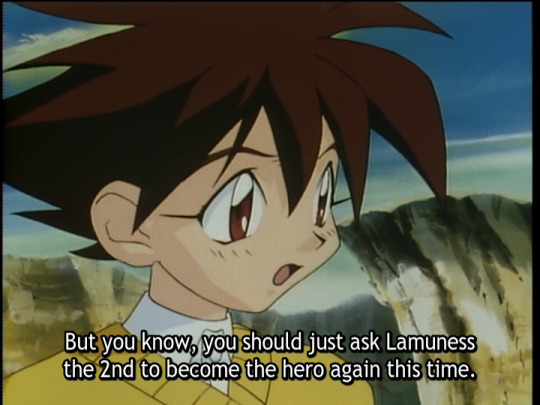

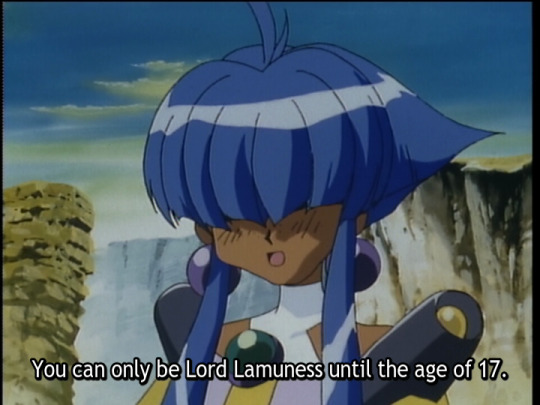
So that's a modern isekai shorthand immediately eliminated. (Note that I haven't once called anything a cliche in this post, I don't have that kind of scorn for the genre. I think it'd be good for actual critics to remove this buzzword from their vocabulary unless they truly face off against something that is an actual ripoff, because people have now taken the word cliche and turned it into an entirely negative thing, same with the word trope. But I digress.)
The entire point of the series is to be an escapist fantasy for little kids who love RPGs, but you'll never once see a stat block nor will you hear much of bosses in the video game sense. Sure, maybe the tyke will wonder about home every now and then but after this point you're set off into the story with the express goal of saving the world. There's nothing deep to think about. Traversing through different "space"s and RPG village-like places is a given, and it seems like they're made up as you go unless they're on a map explicitly (they are supposedly, but they still feel made up). You won't hear much about what Lamunedo thinks besides the fact that his (and Da Cider's) BIG COOL MECHA has his blood pumping.
This is what I mean by goal driven: it ironically feels much more like a video game without constantly bringing attention to the fact that it's supposed to be a video game. A big greater goal punctuated by smaller goals and pitstops is how a lot of JRPGs progress. Perhaps it's prescient to compare a lot of newer isekais to an open world game: you're doing... something, there are story important cutscenes, but you meander around until you hit them and often you are sidetracked. It works when you're the one doing it, but when an isekai story is overwhelmed by the lack of nothing it is accomplishing that's when the audience disengages and starts wondering why the protagonist is a fucking idiot, and why they won't do something that actually matters. Have you ever watched someone dick around in Skyrim? Unless you really like Skyrim in my opinion it's not very fun to watch.
I find that this is why villainess isekai is so popular. Many employ the otome genre, which are much more linear in comparison. Sure, you make choices that lead you off to other routes and affect what ending you get, but everyone who plays Norn9 for example is playing the same Norn9 that the next person plays. Even with linear RPGs, you could be underleveled, you could favor certain characters, your experience can still be somewhat varied. Therefore, in a villainess scenario where the base is an otome game, there is an enforcement of an in-game clock where events will happen regardless of how much you dawdle. In fact, slacking tends to be punished. I'm aware that there are similar premises that don't employ a villainess or are based on other genres that are associated with women like management sims and mobile games, but in general they tend to emphasize proactiveness (also I'm speaking very broadly). Even the characters are treated with care. Sure, the heroine may casually spoil their supposed fate and metagame with previous knowledge, but they feel like actual characters.
In any case, as I've stated several times I carry no ire towards the genre. You'll catch me dead before I watch crap like Mushoku Tensei and Shield Hero but there's plenty of isekai manga and anime that I've either enjoyed or am looking forward to enjoying, past or present. But rewatching the Lamuness series got me thinking a lot about it. I wasn't even intending on writing most of what I wrote and I'll be honest when I say I don't consider myself a writer: I'm not the most eloquent and I struggle to express how I feel but by god do I express.
#general thoughts#cullen rewatches 40 fire#isekai#any comments feedback and reblogs appreciated :pleading:#anime essay#essay#isekai is such a fascinating genre even though i dont have much exp with it
18 notes
·
View notes
Text
Exploring the Best Kenya Parks for Safari and Kenya Cultural Safari Tours
Kenya is renowned for its breathtaking landscapes, rich wildlife, and vibrant cultures, making it a prime destination for safari enthusiasts and cultural explorers alike. Whether you are drawn by the promise of witnessing the Big Five in their natural habitat or experiencing the diverse traditions of Kenya's many ethnic groups, there is no shortage of remarkable experiences to be had.
Best Kenya Parks for Safari
Kenya boasts some of the most famous and diverse national parks in Africa, each offering unique opportunities to observe wildlife in their natural environments. Here are some of the best Kenya parks for safari adventures:
Maasai Mara National Reserve: Known globally for the Great Migration, the Maasai Mara is arguably the crown jewel of Kenya's safari parks. Each year, over two million wildebeests, zebras, and gazelles make their way across the Mara River in a dramatic and perilous journey. In the midst of this spectacle, visitors can also spot lions, cheetahs, elephants, and more.
Amboseli National Park: Set against the majestic backdrop of Mount Kilimanjaro, Amboseli National Park offers stunning views and excellent game viewing. The park is particularly famous for its large herds of elephants and provides ample opportunities to observe these gentle giants up close.
Tsavo National Parks: Comprising Tsavo East and Tsavo West, this vast area is one of the largest national parks in the world. Tsavo East is known for its red elephants and expansive landscapes, while Tsavo West features volcanic hills, dense bush, and a variety of wildlife including rhinos and leopards.
Lake Nakuru National Park: Renowned for its spectacular birdlife, Lake Nakuru National Park is home to thousands of flamingos that transform the lake's shores into a sea of pink. Beyond birdwatching, visitors can also see rhinos, giraffes, and lions.
Samburu National Reserve: Located in northern Kenya, Samburu offers a more rugged and arid landscape. It is an excellent spot for viewing unique species such as the Grevy's zebra, reticulated giraffe, and Somali ostrich. The Ewaso Ng'iro River provides a lifeline for the reserve's wildlife.
Kenya Cultural Safari Tours
In addition to its natural wonders, Kenya is rich in cultural heritage, with over 40 distinct ethnic groups each contributing to the country's vibrant tapestry. A Kenya cultural safari tours offers a unique opportunity to immerse yourself in the traditions, customs, and daily lives of these diverse communities.
Maasai Cultural Experience: The Maasai people are one of Kenya's most well-known ethnic groups, famous for their distinctive dress and nomadic lifestyle. A visit to a Maasai village offers insight into their age-old customs, such as traditional dances, beadwork, and warrior training. Engaging with the Maasai provides a deeper understanding of their role in Kenya's history and contemporary society.
Samburu Cultural Tours: Similar to the Maasai, the Samburu people have maintained a semi-nomadic way of life. Visiting a Samburu village allows you to experience their unique traditions, including their intricate beadwork, which is both a form of art and a symbol of status within the community.
Swahili Coast Exploration: The coastal regions of Kenya, particularly around Lamu and Mombasa, offer a blend of African, Arab, and Indian influences. Exploring the historic Swahili settlements provides a glimpse into the rich cultural fusion that has shaped the region. Visitors can tour ancient forts, bustling markets, and enjoy traditional Swahili cuisine.
Turkana Cultural Tours: In the arid northwestern part of Kenya, the Turkana people have adapted to a harsh environment. A cultural safari to this region includes visits to their homesteads, learning about their livestock rearing practices, and experiencing traditional dances and ceremonies.
Kikuyu Cultural Experiences: As Kenya's largest ethnic group, the Kikuyu have played a significant role in the country's history. Cultural tours often include visits to traditional Kikuyu homes, farms, and learning about their agricultural practices and folklore.
In conclusion, whether you're navigating the wildlife-rich plains of the Maasai Mara or engaging with the rich traditions of Kenya's ethnic groups, the country offers unparalleled safari experiences. Including the best Kenya parks for safari and Kenya cultural safari tours in your travel itinerary promises a journey filled with awe-inspiring sights and meaningful cultural exchanges.
0 notes
Text
A Journey into Swahili Heritage
Malindi, nestled along Kenya's captivating coastline, offers more than just pristine beaches and natural wonders. It is also a treasure trove of cultural richness and heritage, shaped by centuries of Swahili traditions, influences from Arab traders, and European explorers. Whether you're a history enthusiast, a culinary connoisseur, or simply curious about local customs, Malindi promises a variety of cultural experiences that immerse you in its vibrant tapestry. Here are some cultural experiences you can discover in Malindi:
1. Swahili Architecture and History: Explore the ancient ruins of Gede, a Swahili town dating back to the 12th century. Wander through the well-preserved remains of mosques, houses, and tombs, marveling at the intricate Swahili architecture characterized by coral stone walls and arched doorways. The ruins offer insights into Malindi's role as a bustling trading hub and its cultural interactions over the centuries.

2. Vasco da Gama Pillar: Visit the Vasco da Gama Pillar, an iconic monument erected by the Portuguese explorer Vasco da Gama in 1498. This historic landmark marks the first European landing in East Africa and serves as a testament to Malindi's significance in global maritime history. Climb to the top for panoramic views of the town and coastline, reflecting on the cultural exchanges that shaped Malindi's identity.

3. Malindi Museum: Delve into Malindi's cultural heritage at the Malindi Museum, housed in a historic building near the town center. The museum showcases artifacts, exhibits, and archaeological finds that chronicle the region's history, from ancient Swahili civilizations to the arrival of European explorers. Learn about traditional crafts, maritime traditions, and the diverse cultural influences that have shaped Malindi's identity.
4. Swahili Cuisine: Embark on a culinary journey through Swahili cuisine, a fusion of African, Arab, and Indian flavors. Sample local delicacies such as coconut-infused curries, grilled seafood, and dishes like pilau (spiced rice) and biryani (rice with meat or vegetables). Visit local markets to taste fresh fruits, spices, and snacks like mandazi (fried dough) or samosas, each offering a taste of Malindi's cultural diversity.
5. Traditional Music and Dance: Experience the rhythms and melodies of Swahili music and dance performances, which are integral to local celebrations and cultural events. Attend traditional performances featuring taarab music, characterized by melodious vocals and rhythmic beats, or witness energetic dances like the ngoma, showcasing storytelling through movement and music.

6. Local Markets and Artisans: Explore Malindi's vibrant markets, such as the Malindi Fish Market and Marikiti Market, bustling with activity and local flavors. Engage with vendors selling fresh seafood, tropical fruits, spices, and handcrafted goods like jewelry, textiles, and wood carvings. Interact with artisans to learn about their craftsmanship and the cultural significance behind their creations.
7. Cultural Festivals and Celebrations: Participate in cultural festivals and celebrations that showcase Malindi's traditions and community spirit. Events such as Lamu Cultural Festival, celebrating Swahili culture and dhow sailing traditions, offer opportunities to witness traditional rituals, music performances, and culinary delights in a festive atmosphere.In conclusion, Malindi's cultural experiences invite travelers to delve into the region's rich history, traditions, and culinary delights. Whether you're exploring ancient ruins, savoring local cuisine, or immersing yourself in music and dance, Malindi promises a deeper understanding of Swahili heritage and a memorable journey through Kenya's vibrant coastal culture. Plan your cultural exploration of Malindi and uncover the treasures of this enchanting destination along the Indian Ocean.
#safari#africa#across the spiderverse#artists on tumblr#travel blog#asexual#barbie#travel destinations#donald trump#easter
0 notes
Text
REASONS WHY YOU SHOULD VISIT KENYA
1. Masai Mara National Reserve
Highlights: Known for its spectacular wildlife and the Great Migration, the Masai Mara is one of Kenya’s most famous safari destinations. It offers incredible opportunities to see the Big Five (lion, leopard, buffalo, elephant, and rhino) and experience thrilling game drives.
Activities: Game drives, hot air balloon safaris, cultural visits to Maasai villages.

2. Amboseli National Park
Highlights: Famous for its views of Mount Kilimanjaro, Amboseli is a haven for elephant enthusiasts. The park also features diverse landscapes, including swamps, savannahs, and acacia woodlands.
Activities: Game drives, bird watching, visiting Maasai villages, nature walks.
3. Tsavo National Parks (East and West)
Highlights: Tsavo East is known for its vast savannahs and large herds of red elephants, while Tsavo West features dramatic landscapes with volcanic craters, lava flows, and waterholes.
Activities: Game drives, visits to Mzima Springs (Tsavo West), exploring the Shetani Lava Flows.

4. Nairobi National Park
Highlights: Located just outside Nairobi, this park offers a unique safari experience with the city skyline in the background. It’s home to a variety of wildlife, including rhinos, lions, and giraffes.
Activities: Game drives, visiting the Nairobi Animal Orphanage, walking safaris, cycling.
5. Lamu Archipelago
Highlights: A UNESCO World Heritage site, Lamu is known for its well-preserved Swahili architecture, relaxed atmosphere, and beautiful beaches. It’s a great place to experience traditional coastal culture.
Activities: Exploring Lamu Old Town, relaxing on the beaches, dhow sailing, cultural tours.

6. Diani Beach
Highlights: Renowned for its white sandy beaches and clear turquoise waters, Diani Beach is a popular coastal destination offering a range of water sports and leisure activities.
Activities: Beach relaxation, snorkeling, diving, kite surfing, visiting the nearby Shimba Hills National Reserve.
7. Nakuru National Park
Highlights: Known for its large population of flamingos and diverse bird species, Lake Nakuru also offers the chance to see rhinos and other wildlife.
Activities: Game drives, bird watching, visiting the Menengai Crater, exploring the nearby Hyrax Hill Museum.

8. Hell’s Gate National Park
Highlights: Famous for its dramatic landscapes and geothermal activity, Hell’s Gate offers unique outdoor activities like cycling and hiking through scenic gorges and volcanic formations.
Activities: Cycling, hiking, exploring Olkaria Geothermal Station, rock climbing.
9. Samburu National Reserve
Highlights: Known for its unique wildlife, including the Grevy’s zebra and the Somali ostrich, Samburu offers a distinctive safari experience with stunning arid landscapes.
Activities: Game drives, cultural visits to Samburu villages, bird watching, river safaris.
10. Bwindi Impenetrable National Park
Highlights: Located in southwestern Uganda, Bwindi is renowned for its mountain gorilla trekking experiences. It offers a chance to see these critically endangered primates up close in their natural habitat.
Activities: Gorilla trekking, bird watching, hiking, cultural encounters with the Batwa people.

11. Kisumu
Highlights: Located on the shores of Lake Victoria, Kisumu is a vibrant city with rich cultural heritage and stunning lakeside views. It’s a great base for exploring the lake and nearby attractions.
Activities: Boat trips on Lake Victoria, visiting Kisumu Museum, exploring the Dunga Hill Camp.
12. Laikipia Plateau
Highlights: Known for its conservation efforts and luxury lodges, Laikipia offers a range of unique safari experiences and is home to a diverse range of wildlife, including the endangered black rhino.
Activities: Game drives, walking safaris, night safaris, visiting conservation projects like Ol Pejeta Conservancy.

13. Meru National Park
Highlights: Less visited but rich in wildlife, Meru National Park is known for its lush landscapes and variety of species, including the rare albino zebra.
Activities: Game drives, exploring the park’s diverse habitats, visiting the Tana River.
14. Mount Kenya
Highlights: Kenya’s highest peak offers stunning alpine scenery and a range of trekking opportunities. It’s a UNESCO World Heritage site and a must-visit for adventure seekers.
Activities: Hiking, climbing, nature walks, exploring the park’s diverse ecosystems.

Plan Your Kenyan Adventure Today!
Kenya’s diverse destinations offer something for everyone, from thrilling safaris and cultural experiences to relaxing beach holidays and stunning mountain treks. Whether you’re an adventure seeker, nature lover, or cultural enthusiast, Kenya promises unforgettable experiences and breathtaking landscapes. Pack your bags and get ready to explore the wonders of Kenya – a land of incredible beauty and rich heritage.
#wild animals#africa#ugandian knuckles#uganda#safari#tourism#tourist#tour#travel#kenya#kenya safari#kenyan
1 note
·
View note
Text
Discover Hidden Gems: Your Ultimate Travel Guide
Traveling is more than just visiting well-known landmarks; it's about uncovering the hidden gems that truly define a destination. These hidden gems provide a more authentic experience, allowing travelers to immerse themselves in local culture, history, and natural beauty. Whether you're an intrepid adventurer or a casual tourist, discovering these lesser-known spots can make your trip unforgettable. Here’s your ultimate travel guide to uncovering hidden gems around the world best travel agency in kochi
Why Seek Out Hidden Gems?
Authenticity: Major tourist attractions are often crowded and commercialized. Hidden gems offer a more genuine experience, reflecting the true essence of the place.
Less Crowded: Avoid the throngs of tourists and enjoy a more peaceful, personal experience.
Unique Stories: Each hidden gem has its own unique story, often intertwined with local legends and history that you won't find in guidebooks.
Support Local Communities: Visiting off-the-beaten-path locations supports local businesses and communities, helping to preserve their culture and traditions.
How to Find Hidden Gems
Research and Planning: Use travel blogs, forums, and social media to find recommendations from other travelers. Websites like Atlas Obscura are dedicated to uncovering unusual and lesser-known locations.
Talk to Locals: Locals are the best source of insider knowledge. Ask them about their favorite spots that aren’t typically mentioned in travel guides.
Get Off the Beaten Path: Sometimes, the best discoveries happen when you stray from the main tourist routes. Explore side streets, rural areas, and less-trafficked parts of a city.
Use Apps and Technology: Apps like Google Maps, TripAdvisor, and even Instagram can help you discover hidden gems. Look for places with high ratings but fewer reviews.
Hidden Gems Around the World
Europe
Sintra, Portugal: While Lisbon is bustling with tourists, Sintra offers a magical escape with its fairy-tale palaces, lush gardens, and mystical forests. The Pena Palace and Quinta da Regaleira are must-visits.
Cesky Krumlov, Czech Republic: This small town in the Czech Republic is a UNESCO World Heritage site, known for its well-preserved medieval architecture and charming riverside views.
Ghent, Belgium: Often overshadowed by Bruges, Ghent boasts stunning Gothic architecture, vibrant nightlife, and fewer crowds. The Gravensteen Castle and St. Bavo's Cathedral are highlights.
Asia
Luang Prabang, Laos: This serene town in Laos is rich in culture and history. With its beautiful temples, night markets, and the nearby Kuang Si Falls, Luang Prabang offers a tranquil retreat from bustling cities.
Hampi, India: An ancient village in Karnataka, Hampi is filled with ruins of temples and palaces. The surreal landscape and historical significance make it a fascinating destination.
Jiufen, Taiwan: A charming mountain town that inspired the movie Spirited Away, Jiufen’s narrow streets, tea houses, and stunning views over the Pacific Ocean offer a unique cultural experience.
Americas
Valparaíso, Chile: This colorful coastal city is known for its steep hills, vibrant street art, and bohemian culture. The funiculars and views from the hilltops are particularly captivating.
Tulum, Mexico: While Cancun and Playa del Carmen are tourist magnets, Tulum offers a more laid-back vibe with its pristine beaches, Mayan ruins, and eco-friendly resorts.
Montreal, Canada: Often overshadowed by Toronto and Vancouver, Montreal’s blend of French and English cultures, its historic Old Town, and a vibrant arts scene make it a hidden gem worth exploring.
Africa
Chefchaouen, Morocco: Known as the Blue City, Chefchaouen is famous for its blue-painted buildings and stunning mountain backdrop. It’s a great place to explore Moroccan culture away from the crowds of Marrakesh.
Lamu Island, Kenya: This UNESCO World Heritage site offers a glimpse into Swahili culture with its narrow streets, historic architecture, and beautiful beaches. It’s a peaceful retreat compared to Kenya’s more touristy areas.
Tips for Enjoying Hidden Gems
Respect Local Cultures: Always be respectful of local customs, traditions, and the environment. This ensures that these hidden gems remain unspoiled for future visitors.
Be Flexible: Hidden gems might not have the same level of infrastructure as popular tourist spots. Be prepared for less comfort and more adventure.
Pack Accordingly: Depending on the location, you might need to bring specific gear, whether it’s hiking boots, a good map, or extra supplies.
Document Your Experience: Keep a travel journal or blog about your experiences to share with others and preserve your memories.
Traveling to hidden gems is about experiencing the world in a more intimate and authentic way. It requires a spirit of adventure, a willingness to explore, and an openness to new experiences. Whether you're wandering through the colorful streets of Valparaíso, hiking the mystical landscapes of Hampi, or sipping tea in the mountain town of Jiufen, these hidden gems offer unforgettable experiences that enrich your journey and create lasting memories. So next time you plan a trip, consider stepping off the beaten path and discovering the hidden gems that await best travel agency in alappuzha
0 notes
Text
Best Travel Agencies on the Coast of Kenya: Your Guide to Top Coastal Tours
Introduction
The Kenyan coast is renowned for its stunning beaches, rich culture, and diverse wildlife. From the bustling streets of Mombasa to the serene shores of Diani, this region offers a myriad of experiences for travelers. To make the most of your visit, consider engaging with some of the best travel agencies coast in Kenya. Best travel agencies maasai mara in kenya offer tailored tours, cultural excursions, and adventure activities that showcase the best of what the coast has to offer.
Popular Coastal Destinations Covered
Mombasa
Mombasa is Kenya's main coastal city, blending modernity with rich Swahili culture. Popular attractions include:
Fort Jesus: A UNESCO World Heritage Site.
Haller Park: A reclaimed ecological paradise.
Mombasa Marine National Park: Ideal for diving and snorkeling.
Diani Beach
Known for its white sandy beaches and crystal-clear waters, Diani Beach is perfect for:
Beach Relaxation: Sunbathing, swimming, and beachside dining.
Water Sports: Kite surfing, jet skiing, and deep-sea fishing.
Colobus Conservation: Home to the endangered Colobus monkeys.
Malindi and Watamu
These coastal towns are famous for their natural beauty and marine life:
Malindi Marine National Park: A haven for snorkeling and diving.
Gedi Ruins: Ancient Swahili ruins surrounded by forest.
Watamu Beach: Known for its coral gardens and laid-back atmosphere.
Lamu Island
Lamu offers a glimpse into Kenya's Swahili culture and history:
Lamu Old Town: A UNESCO World Heritage Site with narrow streets and stone buildings.
Shela Beach: A serene and pristine beach.
Dhow Safaris: Traditional sailing experiences.
Key Services Offered by Coastal Travel Agencies
Tailored Safari Packages
Tourist companies in kenya offer customized safari experiences to national parks such as Tsavo, Amboseli, and the Maasai Mara. These packages can include luxury lodges, game drives, and guided tours, providing an intimate encounter with Kenya’s wildlife.
Cultural and Historical Tours
Explore the rich cultural heritage of the Kenyan coast with tours of historical sites, traditional villages, and Swahili architecture. Agencies provide guided visits to places like Fort Jesus, Gedi Ruins, and local markets.
Adventure and Water Sports
For the adventurous traveler, travelling agencies in kenya coast offer activities such as snorkeling, diving, deep-sea fishing, and kite surfing. They provide equipment rental, safety briefings, and experienced guides to ensure a thrilling yet safe experience.
Beach Holidays and Relaxation
Enjoy the best beach near Nairobi with packages that include beachfront accommodations, spa treatments, and leisurely tours. Travel agencies can arrange stays at luxurious resorts or cozy beach cottages, catering to different preferences and budgets.
Transportation and Accommodation
Most travelling agencies in kenya coast provide comprehensive services including airport transfers, intercity travel, and accommodation bookings. They offer a range of options from budget hotels to luxury resorts, ensuring a comfortable stay tailored to your needs.
Tips for Choosing the Best Travel Agency
Research and Reviews
Look for travelling agencies in kenya coast with positive reviews and a strong reputation. Check platforms like TripAdvisor, Google Reviews, and social media for feedback from past travelers.
Customization Options
Choose an agency that offers personalized itineraries. This flexibility allows you to tailor your trip according to your interests and preferences.
Value for Money
Compare packages to ensure you’re getting the best value. Consider what’s included in the price such as meals, accommodation, and activities.
Local Expertise
Select agencies with local knowledge and experience. They can provide insights and recommendations that enhance your travel experience, ensuring you visit the best spots and avoid common tourist traps.
Conclusion
Engaging with one of the best travel agencies coast in Kenya can transform your coastal holiday into an unforgettable experience. Whether you’re looking for thrilling safaris, cultural immersions, or serene beach escapes, these agencies offer tailored services to meet your travel aspirations. From the vibrant streets of Mombasa to the tranquil beaches of Diani, the Kenyan coast is a treasure trove of adventures waiting to be explored.
0 notes
Text
Best Months to Visit Kenya A Comprehensive Guide

Kenya, a country renowned for its stunning landscapes, diverse wildlife, and vibrant culture, offers a myriad of experiences for travelers. Understanding the best months to visit Kenya can help you plan a trip that maximizes your enjoyment of its natural and cultural treasures.
Climate Overview
Kenya's climate is diverse, influenced by its varied topography and equatorial location.The dry seasons, from January to February and June to September, are generally considered the best times to visit due to favorable weather conditions and excellent wildlife viewing opportunities.
Peak Wildlife Viewing: July to October
1. The Great Migration
Timeframe: July to October
Highlight: Witness the Great Migration, one of the most spectacular wildlife events on the planet, where millions of wildebeest, zebras, and antelopes cross the Mara River in the Masai Mara National Reserve. The dramatic river crossings and the presence of predators create unforgettable safari experiences.
2. Masai Mara
Best for: Unparalleled game viewing, especially in the months of July and August, when the migration is at its peak.
Shoulder Season: January to February and June
1. Dry Season
Timeframe: January to February
Highlight: This period, following the short rains, offers excellent wildlife viewing as animals congregate around water sources.
2. Bird Watching
Best for: Bird enthusiasts, as many migratory bird species are present during these months, enhancing the birding experience in places like Lake Nakuru and Amboseli National Park.
3. June
Best for: Enjoying a quieter safari experience before the peak tourist season begins. The landscapes are lush from the rains, and wildlife viewing is starting to improve.
Low Season: March to May and October to December
1. Long Rains
Timeframe: March to May
Highlight: Although this is the wettest period, it can be a good time to visit if you prefer fewer crowds and lower prices. The landscapes are beautifully green, and it’s a great time for photography. However, some lodges and camps may close, and certain roads can become impassable.
2. Short Rains
Timeframe: October to December
Highlight: The short rains are less intense, and this period can be a good compromise between the high and low seasons. The Mara River crossings may still occur in early October, offering a chance to witness the tail end of the Great Migration.
3. Coastal Region
Best for: Beach vacations in destinations like Diani, Malindi, and Lamu, which are pleasant year-round but particularly appealing from October to December when the sea is calm and conducive to activities like snorkeling and diving.
Special Considerations
1. Mount Kenya
Best Time to Climb: January to February and August to September are ideal for climbing Mount Kenya due to clear skies and stable weather conditions.
2. Cultural Festivals
Maasai Mara Marathon: Held in November, this event combines sport with wildlife conservation.
Lamu Cultural Festival: Taking place in November, it celebrates the rich heritage of the Lamu Archipelago.
Conclusion
Choosing the best time to visit Kenya depends on your interests and what you wish to experience. Whether it’s witnessing the awe-inspiring Great Migration, enjoying a serene beach holiday, or exploring the country's rich cultural heritage, planning your trip around the optimal months can make all the difference. For wildlife enthusiasts, the dry months from July to October and January to February offer the best experiences, while those seeking solitude and lush landscapes might prefer the shoulder seasons. Regardless of when you go, Kenya promises a trip filled with adventure, beauty, and unforgettable memories.
0 notes
Text
The Top 9 Places to Visit in Kenya for an Adventurous Retreat

With its distinctly diverse panorama and various landscapes, Kenya remains a prime destination for those looking for a holiday destination. From the sun-sopping wet grasslands of the Maasai Mara to the pristine beaches of the Indian Ocean, this East African gem gives lots of thrilling experiences. In this manual, we reveal nine locations in Kenya that promise an adventurous getaway. Each area is uniquely interesting, with sports for adrenaline seekers and nature lovers alike.
From adventurous safaris and intense mountain treks to immersive cultural events and cruises, these destinations are perfect for crafting unforgettable memories. Prepare yourself to be awakened by Kenya’s unparalleled beauty and vibrant spirit as we embark on a journey to the country’s most exciting adventures.
Known for its beauty and considerable flora and fauna, Kenya remains a top vacation spot for vacationers searching for an unforgettable getaway. Here are the nine best places to visit for an adventurous experience in Kenya that will leave you with lasting memories.
The Top 9 Places to Visit in Kenya for an Adventurous Retreat
Maasai Mara National Reserve
The Maasai Mara National Reserve is synonymous with the vital African Safari. Known for its great migration, this iconic reserve offers unparalleled wildlife viewing opportunities. The adventurous can take a thrill ride to witness the spectacular crossing of the river by lions, tigers, rhinos, wild boars, and elephants. For a different perspective, consider an early morning hot air balloon safari with views of the vast savannah teeming with life below.
Mount Kenya
For those looking for a more challenging adventure, Mount Kenya is the ultimate challenge. Being the second-highest mountain in Africa, it has many hiking trails, with Sirimon and Chogoria being the most popular. The climb is a test of persistence, taking you through loads of ecosystems, from dense forests to alpine meadows and snow. The prize is located at the top of Point Lenana, with spectacular views of the surrounding plains and hills.
Amboseli National Park
Located at the foot of Mount Kilimanjaro, Amboseli National Park is known for its spectacular surroundings and big herds of elephants. Adventurers can discover masses of regions inside the park, together with swamps, forests, and savannahs. Photographers will especially experience taking breath taking elephant pictures with the snow-capped peaks of Kilimanjaro within the history. Guided strolling safaris offer close-up perspectives of the park’s flora and fauna, creating an immersive experience in this unique atmosphere.
Lamu Island
Lamu Island is the perfect mix of adventure and cultural diving. A UNESCO World Heritage Site, it boasts a rich history and a vibrant Swahili way of life.
Explore the narrow streets of Lamu by foot or club, as motorized vehicles are rare. Adventure activities include dhow sailing, where you can dive into the calm waters of the islands, as well as a deep-sea fishing trip that gives you the chance to catch marlin sailfish. The island’s annual Lamu Cultural Festival is also a highlight, with traditional dhow racing, dancing, and Swahili food.
Lake Nakuru National Park
The Nakuru National Park Lakes are a haven for birdwatchers and wildlife lovers. The alkaline lake is known for its huge herds of flamingos, which can take game drives to see elephants, leopards, and rare Rothschild rhinos, creating a stunning pink landscape around a surrounding mountain after the encounter. The parks, including grass and acacia forests, offer many opportunities to explore and photograph wildlife.
Hell’s Gate National Park
Hell’s Gate National Park offers a unique and dynamic adventure unlike any other in Kenya. Known for its spectacular cliffs, valleys, and geothermal springs, it is a playground for hikers and rock climbers. Cycling in the park is a popular activity, allowing would-be adventurers to get up close to elephants, rhinos, and buffalo. The park features natural hot springs and the famous Hell’s Gate Gorge that inspired the landscapes in Disney’s “The Lion King.”.
Tsavo National Park
Divided into east and west, Tsavo National Park is one of the largest national parks in the world. It offers a tropical and beyond-safar safari experience. Tsavo East is known for its huge herds of elephants and the spectacular Yatta Plain. Tsavo West has lush landscapes, including Mjima Springs, where you can watch hippos underwater. Adventurers can explore the park’s wide trails in the area, with opportunities for walking, birding, and encountering a diverse population of wildlife in a less crowded environment.
Samburu National Park
Located in the arid northern region of Kenya, Samburu National Park is a hidden gem for wildlife lovers. The reserve is home to unique species such as Gravy's zebra, webbed giraffe, and Somali ostrich, collectively known as the "Samburu Special Five." Adventurers can learn about the unique flora and fauna of the area and participate in game drives with nature on a guided walk. The rolling terrain of the reserve and the Iwaso Ng’iro River provide a fascinating backdrop for a true wilderness experience.
Diyani Beach
For those seeking a more in-depth seashore journey, Diyani Beach offers a mixture of water sports activities and relaxation. These pristine Indian Ocean beaches are ideal for kite surfing, snorkelling, and scuba diving. The coral reefs are teeming with marine life, providing divers with a vibrant underwater panorama.
Adventure enthusiasts can also enjoy deep-sea fishing, jet skiing, and skydiving, making Witch Beach the perfect destination for thrill seekers and seaside relaxers.
Conclusion
A search of the top nine holiday destinations in Kenya reveals the country's diversity and breath taking beauty, from spectacular wildlife treks in the Maasai Mara and Amboseli to Hell's Gate and Mount In the rugged landscapes of Kenya, each location offers unique experiences that cater to thrill seekers and nature enthusiasts alike, guaranteed. By choosing a Kenya tour Package, travellers can easily experience the best of these stunning destinations with skill fully planned itineraries that maximize adventure and sightseeing.
Also read : Tanzania tour Package
#Kenya tour Package#kenya tour package from India#kenya tour package from Kerala#kenya Holiday packages
0 notes
Text
**Day 1-3: Nairobi**
- Arrive in Nairobi, the capital city of Kenya.
- Spend the first day acclimatizing and exploring the city's attractions like the Nairobi National Museum and Karen Blixen Museum.
- On day 2, visit the David Sheldrick Wildlife Trust to see orphaned elephants and the Giraffe Centre to get up close with giraffes.
- Day 3, take a day trip to Nairobi National Park for a safari experience just outside the city.
**Day 4-6: Maasai Mara National Reserve**
- Travel to the world-famous Maasai Mara National Reserve.
- Spend three days on safari, exploring the vast plains and witnessing the incredible wildlife, including the Big Five (lion, leopard, elephant, buffalo, rhinoceros).
- Enjoy morning and afternoon game drives, guided nature walks, and cultural visits to Maasai villages.
**Day 7-9: Lake Nakuru National Park and Lake Naivasha**
- Depart Maasai Mara and head to Lake Nakuru National Park, renowned for its flamingos and rhinos.
- Spend a day exploring the park and its diverse birdlife and wildlife.
- Next, travel to Lake Naivasha, a freshwater lake surrounded by lush vegetation.
- Enjoy boat rides, bird watching, and visits to Crescent Island or Hell's Gate National Park for hiking and biking.
**Day 10-12: Amboseli National Park**
- Depart Lake Naivasha and head to Amboseli National Park, famous for its large herds of elephants and views of Mount Kilimanjaro.
- Spend three days exploring the park on game drives, admiring the stunning landscapes, and photographing wildlife against the backdrop of Africa's highest peak.
**Day 13-15: Tsavo West National Park**
- Travel to Tsavo West National Park, one of Kenya's largest and oldest national parks.
- Spend three days exploring the park's diverse habitats, including savannah, mountains, and rivers.
- Visit attractions like Mzima Springs, Shetani Lava Flows, and Ngulia Rhino Sanctuary.
- Enjoy game drives and optional activities like guided walks and bird watching.
**Day 16-17: Lamu Island**
- Depart Tsavo West and fly to Lamu Island, a UNESCO World Heritage Site known for its Swahili architecture and rich cultural heritage.
- Spend two days exploring the narrow streets of Lamu Town, visiting historic sites, relaxing on pristine beaches, and indulging in Swahili cuisine.
**Day 18-20: Nairobi**
- Return to Nairobi for your last three days in Kenya.
- Spend time shopping for souvenirs at local markets like Maasai Market or Utamaduni Craft Centre.
- Enjoy a farewell dinner at a renowned restaurant, reflecting on your incredible journey through Kenya.
- Optionally, take day trips to nearby attractions like the Nairobi National Park or the Karen Blixen Museum.
This adjusted itinerary still offers a diverse range of experiences, including wildlife safaris, cultural immersion, and beach relaxation, while excluding Diani Beach.
0 notes